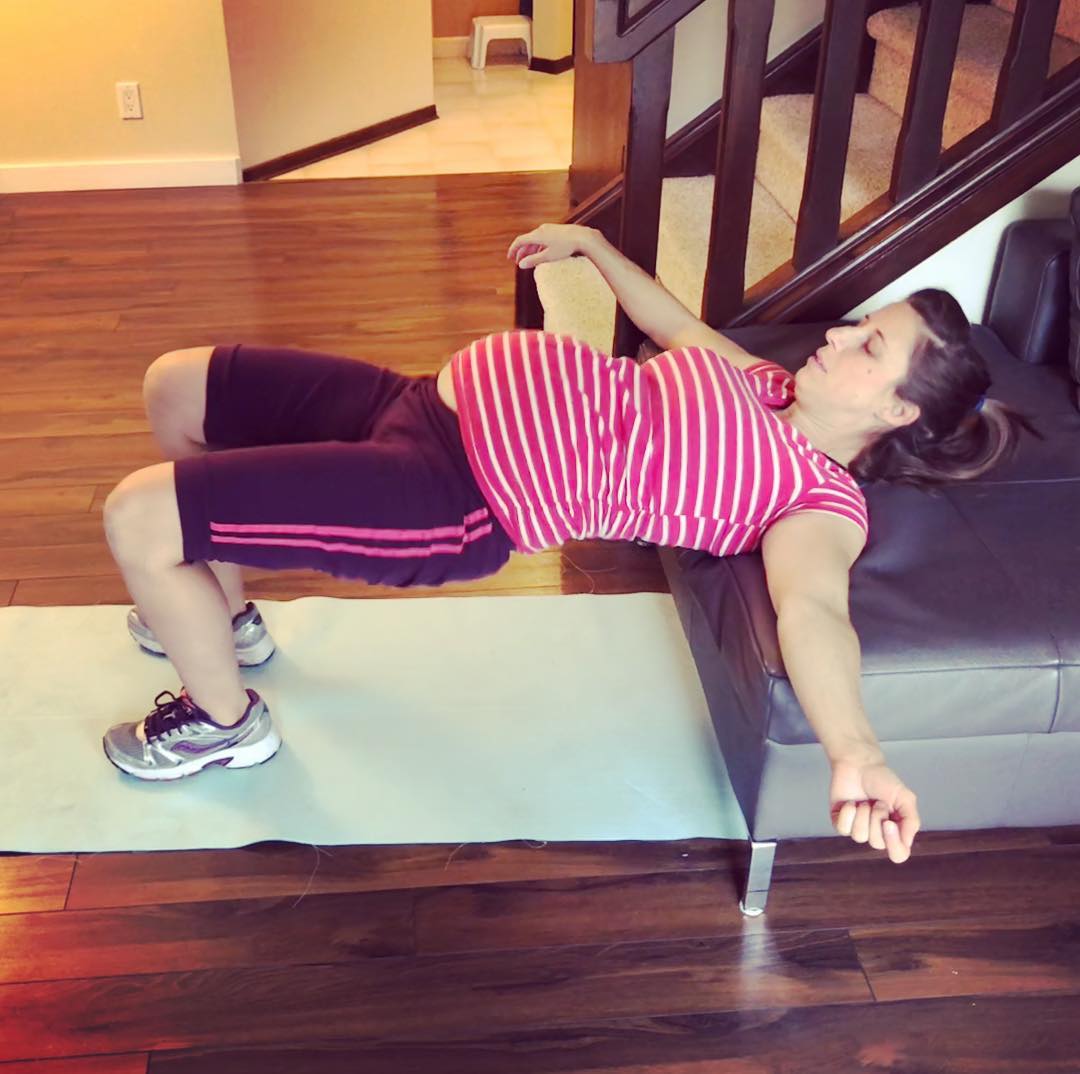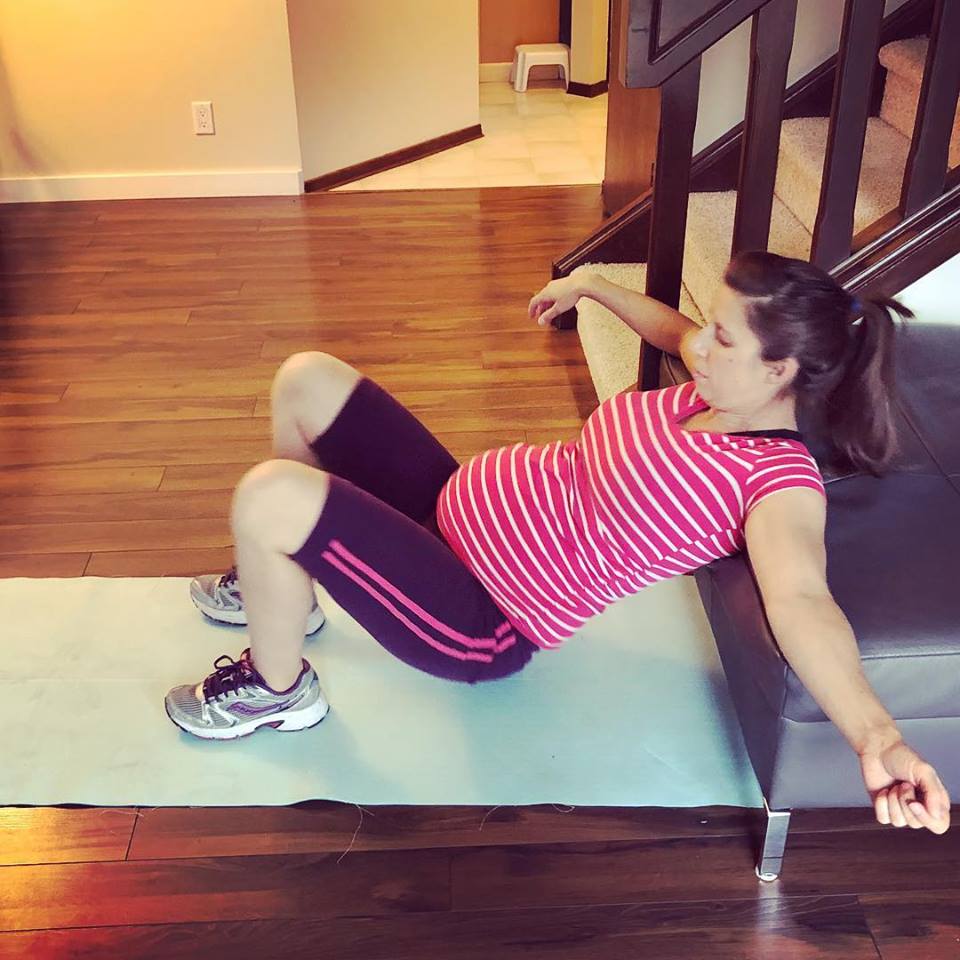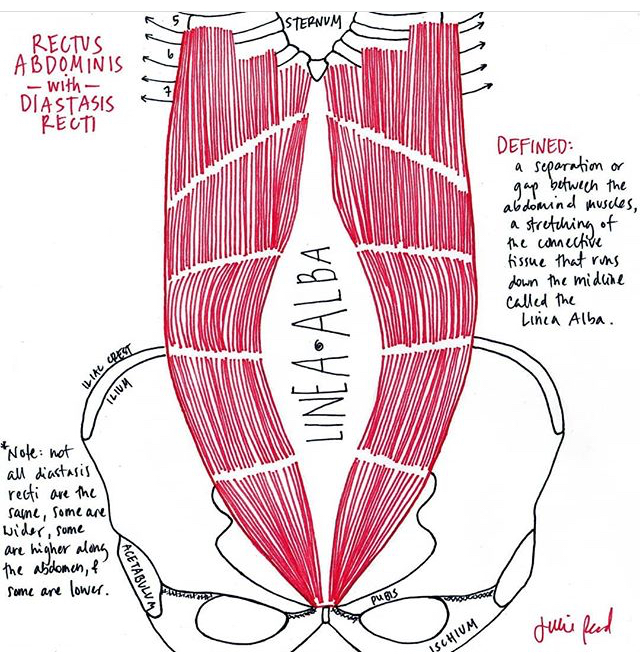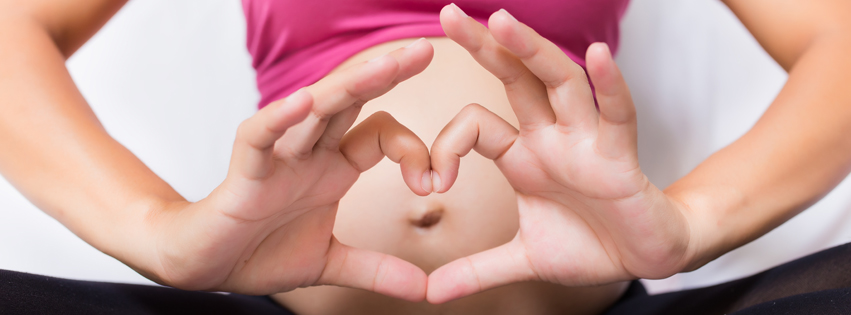
THE BARBELL BLOG
A solid resource squeezing out the facts
Be your own advocate!
When I was 20 weeks pregnant, I had intense pain in my leg. I knew something was very wrong, but my doctor dismissed me.
TBT to 11 years ago standing with my Sister in law. I had 2 weeks to go. She had 2 1/2 months.
When I was 20 weeks pregnant with my son I had a DVT, a Deep Vein Thrombosis. A blood clot in my leg. A very large blood clot.
I was walking between meetings with some colleagues and I told them I had to take a taxi because my leg hurt too much. They thought I was nuts.
I went to my doc that afternoon and she told me it was probably "just pregnancy pain". That night I couldn't sleep because of the pain. So I asked Dr. Google, and I self diagnosed a DVT.
I went back the next day and she still didn't think it was anything serious. I told her there was no way it was just "pregnancy pain" and that I was sure it was a blood clot. Because I was so adamant, she told me she would send me for an ultrasound "just to put my mind at ease."
I remember sitting in that ultrasound room and the technician came back and said "Do you have anyone here with you?" I told her I didn't. And she said "Well you need to get to the hospital now." I was admitted immediately.
My doctor made a mistake. My blood clot was extremely large and if not treated it could have been deadly. I was admitted to the hospital and my 20 week affair with needles began. (My husband had to give me daily blood thinner medication by a needle.... and I HATE needles. 🙈)
I trusted my intuition and I wouldn't leave the office until she sent me for an ultrasound. I was not one to question what a doctor has to say, but I did that day.
DVT's are not common, but they are 10 times more likely to happen during pregnancy. I knew nothing about them. We had recently been on a long car trip to visit family and a few days later I knew something wasn't right. I had intense pain and some swelling in my left leg.
If you think that something's not right... if your intuition is telling you something.... go with your gut.
Fight for what you believe. Don't let someone - even if it is a doctor - tell you it's nothing.
Ask the questions. Demand answers. If you don't think you are being treated fairly, find another medical professional.
Be your own advocate.
.
Because if you won't, who will?
Can I lie on my back during pregnancy?
Eleven years ago when I was pregnant, I was told not to lie on my back.
“Don’t sleep on your back!”
“Don’t exercise on your back!”
“Don’t lie on your back!”
Well times they are a changing’.
Eleven years ago when I was pregnant, I was told not to lie on my back.
“Don’t sleep on your back!”
“Don’t exercise on your back!”
“Don’t lie on your back!”
Well times they are a changin’.
In the past it was thought the baby could press on and block the moms vena cava (vein that carries blood from lower body to the heart). So lying on your back for long periods of time was not recommended.
However more recent research suggests that as long as you feel ok, you and the baby are probably ok. That is, if there is no nausea, light-headedness, discomfort, tingling in legs, or breathlessness, you can continue in that position.
But if you start to feel those symptoms (which may be more common in the third trimester) then it’s time to probably use an incline or just avoid the supine position when you can.
If you're not feeling great lying on your back for a bridge. Lift it up a level to a hip thrust.
This exercise is great for the gluts, but also activates the core. Tie in your core-connection breath and you've got a fantastic prenatal exercise. Inhale as you lower and exhale as you lift.
Hook your shoulder blades on to the edge of a bench (or couch!). You can have your arms straight out or put your hands behind your head.
Keep a straight line with your back. Try not to overextend or arch your back.
Strengthening your gluts during pregnancy is a great way to support your pelvic floor. It can also help with those aches and pains through the hips and lower back.
Feeling good? Try a hip thrust hold.
While your hips are raised and your back is flat, hold the position. Be sure to breathe!!
Check into how you’re feeling and modify as needed!
Diastasis Recti. The Good, the Bad and the Not So Ugly.
Read more about Diastasis Recti. What is it? How to check for it? What to do about it?
Diastasis Rectus Abdominus
What is it?
We have muscles down the middle of our abdomen, called the Rectus Abdominus Muscles. (or sometimes referred to as the 6 pack muscles). In between those muscles, we have connective tissue called Linea Alba. This tissue runs down the middle from your sternum to your pelvis. It stretches when we are pregnant and allows our abdominal wall to grow with our baby. The gap in between the muscles is referred to as Diastasis Rectus Abdominus.
THIS. IS. AMAZING.
Our bodies change and MAKE ROOM for the tiny human we are growing inside of us.
INCREDIBLE.
No need to fear it because during pregnancy it is TOTALLY NORMAL.
NORMAL.
You didn't do anything wrong.
Your body is adapting to fit your baby.
EXTRAORDINARY.
MOST pregnant women will have Diastasis Recti in the last month of pregnancy (and most likely before that)
Julie Read shows us Rectus Abdominus (above) and Rectus Abdominus with Diastasis Recti (below). You can see more of Julie Read's work here.
The majority of bodies will heal on their own postpartum, but some may need some extra help. A Diastasis Recti is when you have a gap of 2 fingers or more in between the rectus abdominus muscles. However, the distance of the gap is not necessarily the issue. What you need to be more concerned with is the tension of the linea alba - the connective tissue. It's important to have strong tension in this tissue. This will give you better core function.
Sometimes the gap may never close, but if the tension is strong, that's OK.
How can you check?
There are 3 places to check. Above the belly button, at the belly button and below the belly button.
Lie on your back with your knees bent and your feet flat on the floor. Relax your head and shoulders and place your fingers, with your palm facing towards you, at the belly button.
Lift your head and neck just off the floor (not a crunch), exhale, and press with your fingertips. You may feel the two sides of the rectus abdomens come together to hug your fingertips. The gap that you may feel is the Diastasis Recti.
Now check above the belly button and then below the belly button. (approximately 3 fingers above and below.)
Now feel the tension. You shouldn't be able to sink your hand deep into the abdomen. The goal is to have strong tension in the linea-alba, similar to what a stiff trampoline feels like.
What can you do about it?
- First of all, sleep and rest! If you are a new mom, you NEED sleep and rest. Your body needs time to heal. And sleep and rest are a big part of that healing process.
- See a Pelvic Floor Physio therapist. She can check to see if there is Diastasis Recti and also check you for other pelvic floor dysfunctions.
- Check your alignment. Get your ribs over your hips. You don't have to be in perfect alignment all the time. But it's something to keep in check because when you're not in correct alignment the intra abdominal pressure will affect the Diastasis Recti.
- Breathe. If you find yourself holding your breath when you are exercising or lifting your baby, or when you are doing any activity... BREATHE! Learn more about the core-connection breath here. And stop holding your breath!
Good alignment and breathing will help you control the intra abdominal pressure. Now, if you get all of these in line, and you can perform some simple base exercises with correct strategy, then it's time for a challenge.
If you can't breathe properly, or if you have doming or bulging you need to change it up. But if you can manage the tension and the intra-abdominal pressure with the breathing, then you can add resistance and change things up.
Until then, you may need to stay away from crunches, planks, situps and the 'traditional' core exercises.
And if you see an advertisement saying DO THIS ONE EXERCISE TO HEAL YOUR DIASTASIS AND GET RID OF YOUR MUMMY TUMMY, please ignore it, delete it (hell, even report it!) and move along.
There is no such thing as ONE EXERCISE that will heal EVERYONE'S Diastasis.
Nope.
Not possible.
Cause every body is a different body.
Prenatal Fitness - What should you do?
Safe, suitable and regular physical activity throughout your pregnancy helps keep you and your baby healthy.
But it's so confusing. What can I do? Should I continue with this activity? Will this hurt the baby? Can I keep doing what I was doing? Will this exercise hurt my body?
So many questions! The answer? Read more.
Safe, suitable and regular physical activity throughout your pregnancy helps keep you and your baby healthy.
But it's so confusing. What can I do? Should I continue with this activity? Will this hurt the baby? Can I keep doing what I was doing? Will this exercise hurt my body?
So many questions!
And the answer?
Well, that depends.
I think you can count on the general rule that if you were exercising at a moderate to high intensity before pregnancy, you can continue (if there's no health concerns.)
If you were not exercising before pregnancy, this is not the time to rev things up. It's ok to exercise at a low to moderate intensity. And you CAN start exercising during pregnancy even if you weren’t very active before.
However, every body; every fitness level; every pregnancy makes it difficult to prescribe a one size fits all exercise plan.
There are so many benefits of exercising during pregnancy.
The Benefits of Prenatal Fitness
Boosts your energy
Helps you sleep better
Reduces pregnancy discomfort
Helps you prepare for childbirth
Reduces stress and lifts your spirits
Improves your self-image and confidence
Increases rate of postnatal recovery
Prevents excessive weight gain
Decreases risk of high blood pressure and gestational diabetes
Decreases severity of low back pain
With all these benefits, why wouldn't you exercise?
Well you have to ask yourself. How do you feel? Does the exercise make you feel good? Are you feeling any pain? If so, you need to stop and re-assess. Can you change the exercise? Can you lower the weight? Can you modify your position?
Does it make you want to stay in bed for 2 days afterwards being totally wiped out? Perhaps you need to lower the intensity. Rest is very important during pregnancy and you should honour that as well. You are building a human life and that takes its toll with nausea and exhaustion. Resting is important!
Should you continue to do all the things that you were doing before?
Well, that depends.
Are you doing activities that involve contact? (hockey, basketball, soccer)
Are you doing activities that could involve falling? (skiing, rock climbing, mountain biking)
Think about the risk vs the reward. What is the risk to you and your baby? What is the reward? Is the risk worth the reward?
When I was pregnant, I stopped skiing. Not because I thought it would hurt my body - I could ski runs confidently with no problem. I stopped because I was terrified of being hit by another person on the ski hill. That was my decision. Even though I love skiing, I determined the risk wasn't worth the reward.
Should you continue running? Think about the risk versus the reward.
What about running? The risk of contact or falling is pretty minimal. However, you need to consider the risk to YOUR body. Your pelvic floor is already supporting the weight of the baby and all the extra fluids. You need to think about the extra pressure that you're putting on it with the impact. It could affect your pelvic floor recovery.
There are some very safe and effective activities that will keep you and your baby safe. For example: walking, stationary cycling, swimming, prenatal yoga and strength training.
Strength training is amazing for your pregnant body as you train for life with your new baby.
Lifting your baby in and out of the crib. Moving the car seat to and from the car. Lifting the stroller in and out of the SUV. Carrying your screaming toddler out of the grocery store.
Strength training during pregnancy can help you with these activities postpartum and help train you for life as a mom.
If you start to feel extra pains with certain movements, it doesn't always mean you need to stop completely. It means that you need to reassess the movement and perhaps change the breathing strategy or your alignment with that movement. Try different positions. Try exhaling at different parts of the movement. Try different strategies.
Now is the time start thinking about the core and pelvic floor. Strengthening AND learning to relax the core and pelvic floor muscles will help you during labour and postpartum. Learning diaphragmatic breathing will also help you recover postpartum...read more about that here. And seeing a pelvic floor physiotherapist while pregnant will be a wonderful addition to your birth experience and a great start to your postpartum recovery.
Pregnancy might seem like the perfect time to sit back and relax. You likely feel more tired than usual, and you might feel some new aches and pains from the miracle that is growing inside of you. It's ok to take some time to rest.
Pregnancy is also a great time to be active. Just remember to cue into your body, be safe and have fun with it!











